

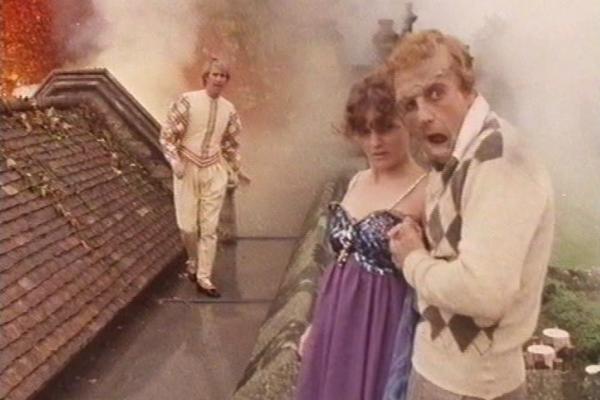
Often said to be the first historical since 1966, there's really no historical elements here, just a story set in the past with entirely fictitious events. The first Davison two-parter, it's a welcome change of pace, but it's not a direct continuation of the series' original Reithian leanings. The 1920s characters involved here are stereotypes and the plot somewhat trite, but the regulars give one of their better accounts, even if director Ron Jones (in his first full job for television) at one point lingers on the face of Sarah Sutton's stand in for her dual role as Nyssa and her lookalike Ann Talbot. Sutton playing two parts was an event that famously led to the creation of the phrase "as thick as two short planks".
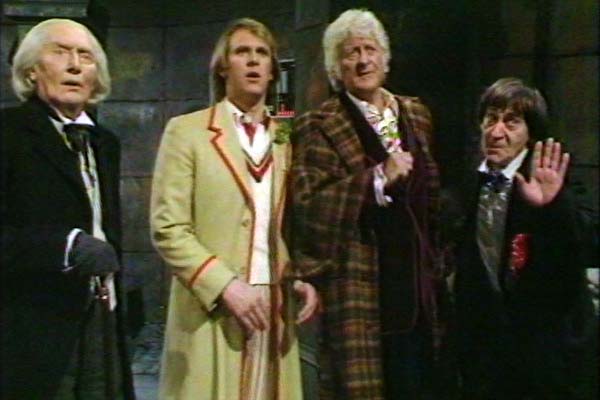
The first scene of The Five Doctors involves Davison unveiling a brand new console for the TARDIS. While a lot of the previous versions still look non-specifically futuristic, having a console made up of 1980s BBC Micros isn't something that's aged particularly well, a criticism that can be extended to the entire story.
Yet to knock The Five Doctors for how pedestrian it seems in 2012 is perhaps missing the point: this was Doctor Who at the dawn of the video age. The month before this special aired, the first Doctor Who story to be released onto video (Tom Baker's Revenge of the Cybermen) went out to shops on Betamax and Laserdisc, and the notion of the series being watched and rewatched was barely thought of.
These days it's sad to see Troughton turning in a caricature, just as it's obvious Tom Baker, represented by unused film footage, had said no to appearing in the serial. Davison doesn't get much meat to his character, the pace is lacklustre and Richard Hurndall, though he tries his best, really isn't much of a replacement for the sadly deceased William Hartnell. Yet although it looks tired today, for one wintery November evening long ago, this story managed to enthral millions.
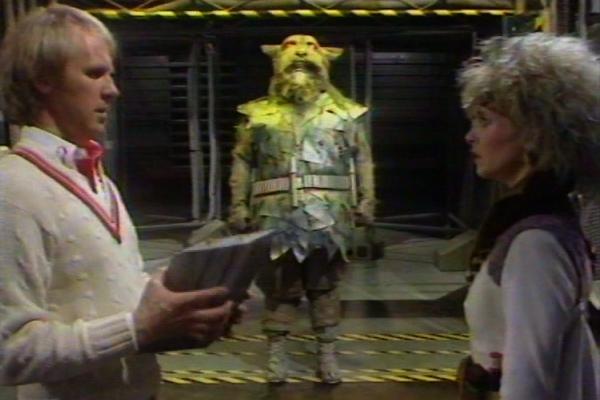
Appreciation of Doctor Who is a subjective thing. If your idea of a perfect Doctor Who story is the bloke from All Creatures Great and Small getting pushed around by Liza Goddard in a bubble helmet while a ten foot dog saves the universe by pushing a red lever, then you could be in for a treat with Terminus. And being helmed by a Blake's 7 director, then there's some painful "slow fighting" to sit through during this story.
Writer Stephen Gallagher had previously given us the superbly fractured narrative of Tom Baker's Warriors' Gate, but turns in a more plodding, linear tale here. And while Terminus not only commits all the crimes listed above, but also the fatal Who crime of being dull, it's really not as bad as its reputation. One of the key tenets of the Davison era was that it was a reaction to the wilder excesses of Tom Baker's later years, where humour was almost stripped entirely from the programme.
While all manner of tatty aliens and ludicrous plot developments could be overlooked when treated with ironic disattachment, the level of candid seriousness during Peter Davison's time in the role was both its blessing and its curse. Having some of the more extreme situations being played without even the slightest hint of tongue in cheek made the stories sometimes harder to swallow; yet the Davison era has to be given credit for at least daring to try.

The best of Davison's two-part stories, The Awakening is a somewhat muddled tale of overstated exposition, time breaks, plastic faces in churches and discussions of tea, but it at least tries to structure a narrative. Having a tale with a developed beginning, middle and end isn't something that's easy to do in just fifty minutes, so it's to writer Eric Pringle's credit that he does better than most here.
Two scenes are most notable in discussion of this story: a scene deleted for time that gave us the first glimpse of Kamelion since his introduction; and a scene where a man orders Tegan to remove her clothes and change "unless you want me to do it for you". Added by script editor Eric Saward, it not only demeans the character, but it also points to the somewhat nastier, misogynistic and mean-spirited edge the series would take after Davison left the programme.
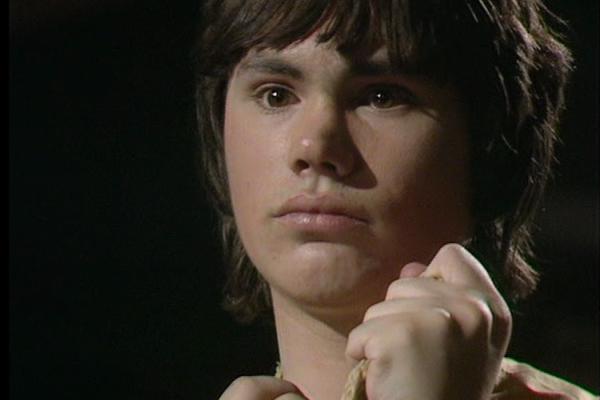
Famously the story where Adric dies, Earthshock has a lot of weight on its shoulders as it asks the viewers to care about the fate of a man who can't even stand still convincingly. As with The Five Doctors, these stories weren't meant for reconsumption, and many of the "shocks" present at the time of transmission are overly familiar today. Seen again, the story displays Eric Saward's predilection for macho dialogue and action-orientated setpieces, elements which perhaps don't gel incredibly well with a multi-camera studio set up and the more fey, passive Doctor played by Davison.
Yet if time hasn't been very kind to Earthshock, you know this is Doctor Who when the period's habit of name casting gives us Beryl Reid as a hardened starship captain. It's the kind of left-field casting decision that shouldn't work, but does. The somewhat overwrought melodrama of the climax was memorably lampooned in a spoof YouTube video. (Which has sadly been copyright blocked by the BBC since this article was published).

Resurrection of the Daleks is a story that even its writer concedes is messy and unfocussed, a continuity-heavy tale that has Davison's Doctor emasculated by Davros in a misguided confrontation scene. Yet if some of the material is inappropriate for the programme, the serial scores highly as an illustration of how much Saward improved while working on the series.
His earlier stories, particularly Earthshock, tend to be entirely plot-driven, where dialogue is strictly limited towards exposition and advancement of narrative. Resurrection of the Daleks sees him focus more on characterisation, where people say things so that we know who they are, rather than what they're going to do. It's not entirely successful, and is fundamentally far too cheap and silly for the testosterone-fuelled action piece it strives to be, but as an exploration of the writer's craft it rewards.
The following year Saward would progress even further, giving Colin Baker the character rich black comedy of Revelation of the Daleks, the finest script he ever did. Resurrection also features a nice leaving scene for Tegan, where she remarks that with all the violence that "it's stopped being fun". Sure, it's hard to understand why she found her time "fun" when she's just spent three years moaning, but it's hard not to be touched as we leave her behind for the final time.
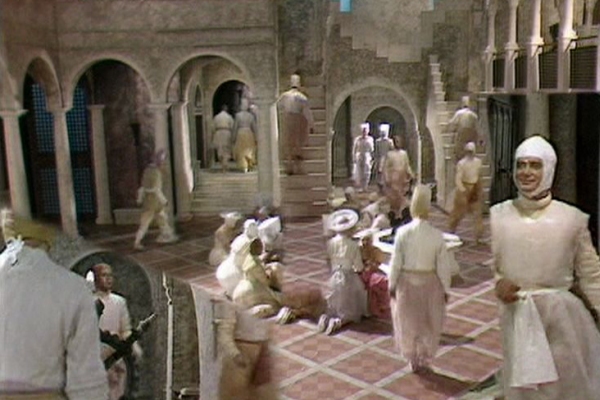
Davison's debut story, and perhaps the ultimate example of how the execution of the era often pulled at the ideas behind it. The fifth Doctor had adventures that were often less conventionally dramatic than before, where threats were more ethereal and esoteric. Villains weren't always out to conquer the universe, but out to conquer a companion's subconscious mind, or there to confront the merits of their own existential worth.
Although the first two episodes of Castrovalva perhaps ponder regeneration longer than is strictly necessary – the narrative "cheat" the series uses to replace the lead is something that should be quickly glossed over rather than focussed on for casual viewers' disbelief – the second half is a dreamlike exploration of a fantasy city. There are plenty of charming moments, such as Davison being taught to count by a small girl, or arriving at Castrovalva to find himself. However, the production of all this tears at every good intention the script has. The BBC's head of drama group Graeme McDonald even issued internal memos about the quality of the story, citing the acting of the companions as a major factor. In the defence of Sarah Sutton, then very few actresses could make lines like "I know so little about telebiogenesis" sing, but Fielding and Waterhouse – in their fifth and ninth recorded performances respectively – still had a lot to learn.
The Davison era has been badly served on DVD, incidentally. Although nicely cleaned up, the stories have been remastered more than restored, with heavily artificial colour regrading on the location shoots just one of the issues present. In Castrovalva whenever the crew step outside it looks as if fluorescent lipstick and blusher is being worn... and that's just on Peter Davison. Some fans try to overlook or even praise these multiple "fixes", but it works against the spirit of archive television, and it's a shame the opportunity to buy these stories as they were originally broadcast is not available to consumers.